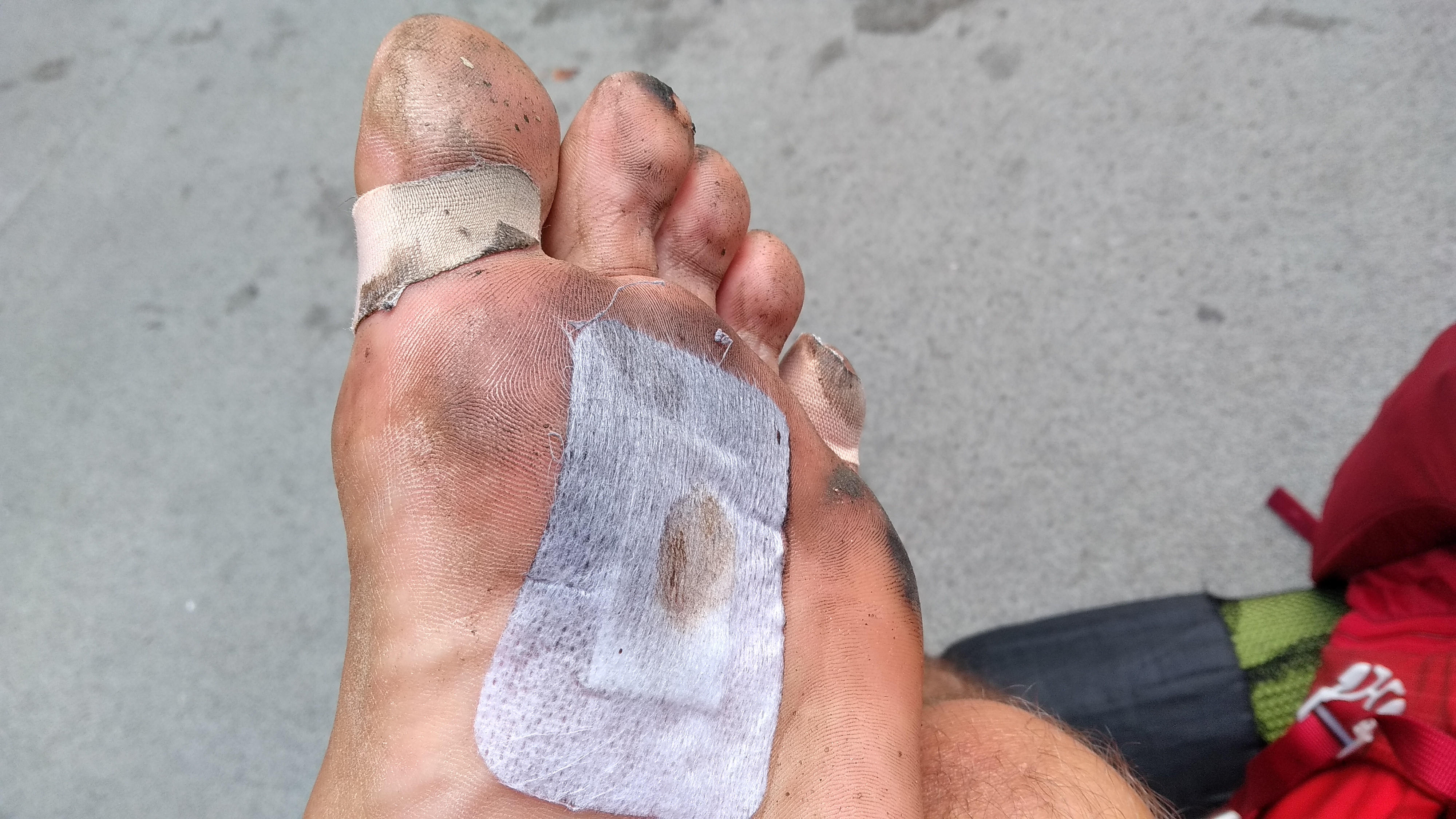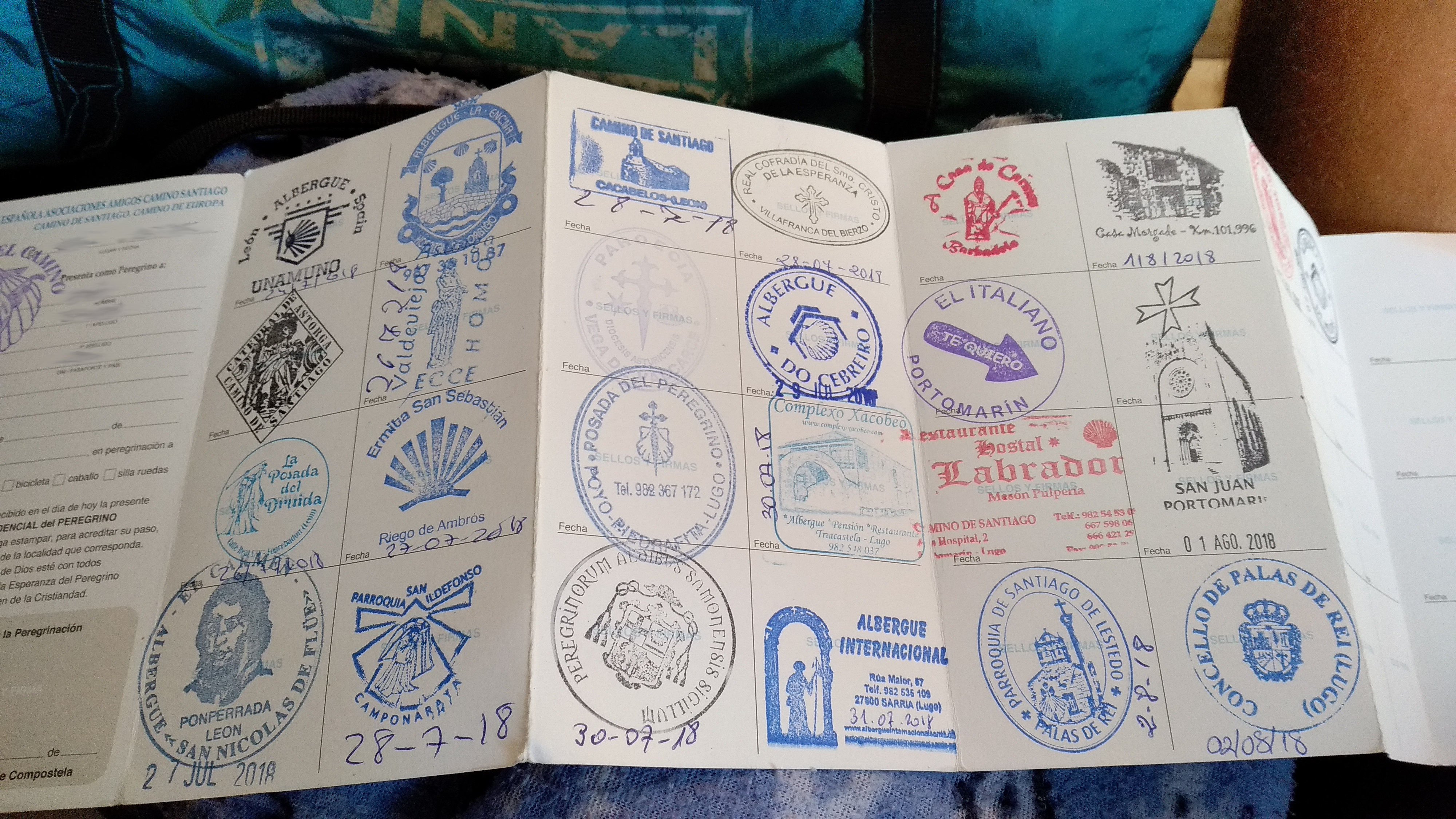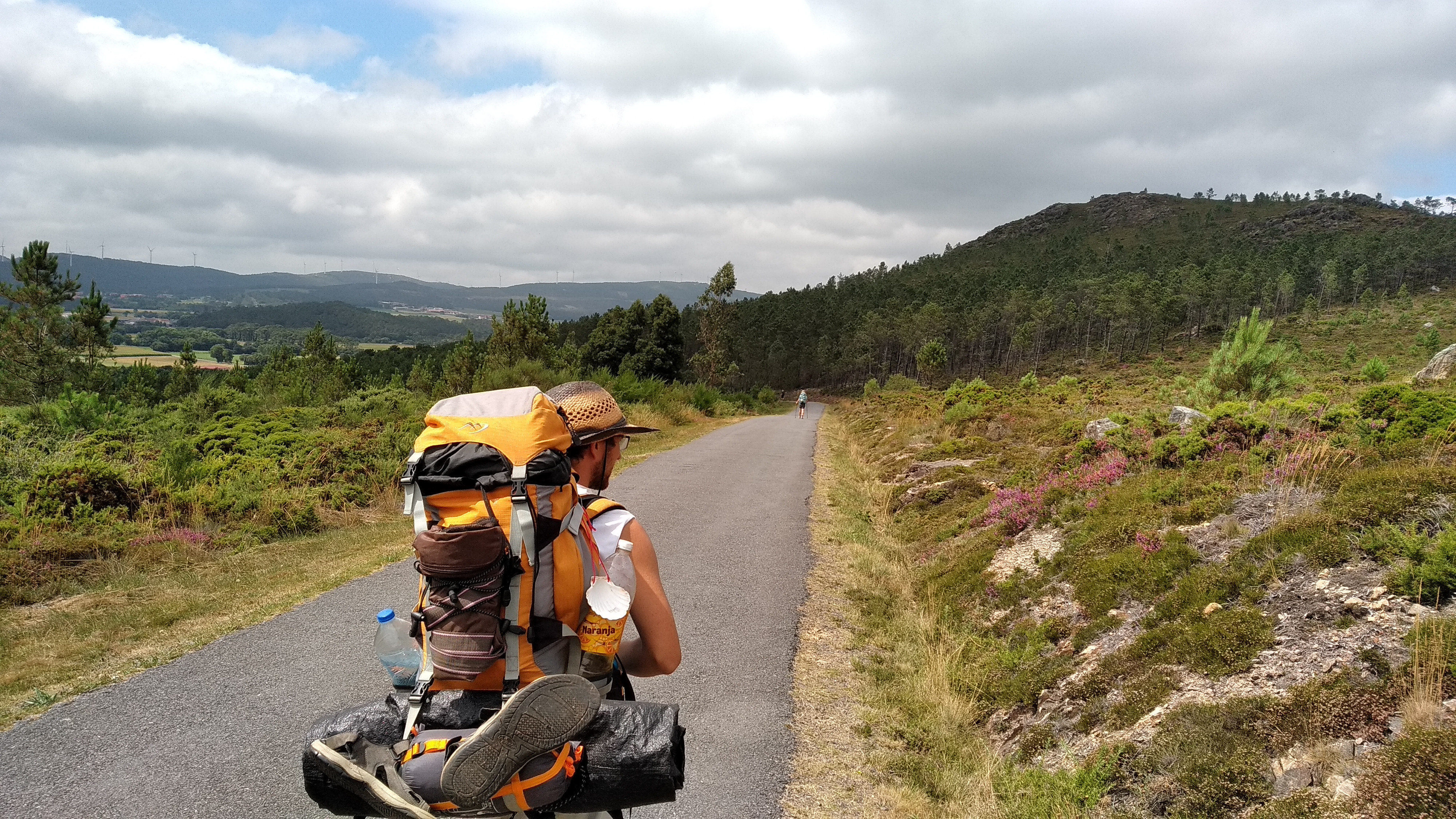Pilgrimage to Santiago de Compostela
This was quite a journey! We haven’t walked the whole way from Saint Jean but it was still an unforgettable and life-changing experience. Our Camino started in León and ended in Fisterra (July-August), literally at the end of the world. It was about 400 km. In this article I will not describe the way because this is something that everyone has to experience on their own to understand. This article is more about sharing some good information that someone might find useful on their own way to Santiago.

This pilgrimage is something that can change your mind. Walking alone or with a few people, forgetting everything, leaving all the every day’s problems at home, letting the old self die and as my friend and fellow pilgrim said, being reborn as a new human being.

Sleeping
- Despite to whatever people say it is definitely possible to do camping the whole way, a lot of wild nature and good spots for a tent and local people don’t mind that at all. One lady offered us her garden when she saw our tent nearby. Some albergues offer a garden where you can have a tent and use their facilities for half the price.
- If I went again I’d not even bring the tent. It would be possible to survive with just a tarp because the temperatures are good during the night (it was a bit cold but with some clothes on it’s OK, I didn’t even have a sleeping bag) and in some villages there are even some old ruins of houses and shelters where nobody would notice you.
- The albergues aka cheap (5-10 EUR) accommodations for pilgrims with credentials are everywhere along the way. There are usually big rooms for 5-40 people, showers, toilets, kitchen with microwave oven and stove.
- Municipal albergues are the cheapest but you have to come soon enough before it gets full.
- Donativos are albergues where volunteers work for free and you can donate how much you want.
- Be careful, bedbugs appear from time to time. I got a few bites too. Make sure to have something underneath you to avoid lying on the mattress (they sometimes give you a special one-time wrapping at the reception) and put your bags on the floor, not touching the bed. (some people use big plastic sacks to protect their belongings)

Food and water
- There are shops and supermarkets almost in every a bit bigger village (we found at least one shop every day). If not there are always some restaurants, bars or albergues where you can buy something.
- In many villages you can find an agua potable water tap somewhere nearby the center. Again you can always get a water from some restaurants along the way. They usually don’t mind filling your bottles even if you don’t buy anything. The tap water is good to drink everywhere along the way.
- 1 or 1.5 liter of water should be enough till the nest village. I was carrying 2 liters first three days but it was not necessary.
- Drink a lot even if you are not thirsty. It’s dangerous during the hot days. Fruits help a lot too when you’re feeling dizzy.
- If you’re in albergue, check the kitchen first before going shopping. There might be some leftovers and things like ketchup, salt, pasta etc. free to use.

Clothes and gear
- If visiting during summer, T-shirt and shorts are OK. I got one sweatshirt and light jacket too, used the sweatshirt during the night along with a light blanket.
- Make sure to have a good bag especially when you’re carrying a lot of stuff. Your back will thank you.
- Boots. Many people will probably say I was crazy here but I have no regrets. I walked the whole way in sandals without socks. Yes I got blisters but more or less the same amount as many other people with hiking boots (and it was not exactly because of the shoes but due to my own stupidity, got the straps too loosened so my foot was moving a lot which caused the blisters, always keep it tight). I just prefer to feel some air instead of having my feet suffocating. If you wanna do the same, make sure to buy some hiking sandals (seriously, the normal urban ones would be a problem I think) and make sure to have your legs used to walking in them for long distances. Also make sure to walk carefully in the mountains. Important to watch your step on the rocks etc.
- Some people were wearing extra thick socks or even two socks at once (on one leg).
- A small raincoat might be a good idea. It rained one day in the mountains.
- I didn’t have any hat, there is a lot of shadow along the way and one can cool his head down in the fountains. I’d wrap a T-shirt around my head if necessary.
- Leave all the unnecessary things at home. Seriously go through all the stuff you wanna take and reconsider (there is a washing machine in almost every albergue).

Pilgrims, people...
- Some people say that the camino is full of pilgrims, overcrowded...well not exactly. Maybe the last 100 km, it’s sometimes like walking in one long crowd but on the other hand, it’s nice to meet some people there, share your experience and talk a bit. We’ve made a few good friends there and it was nice to meet sometimes during the way passing each other multiple times a day.
- Greet every pilgrim buen camino.
- Learn some Spanish greetings and thank you. Quite useful.
- People don’t usually speak English along the way. It’s getting better when approaching Santiago.
- Locals are really nice. We got lost two times and someone always came without asking and showed us the way.

Random tips
- Bring a lot of plasters (also some big ones) and some ointment for strained muscles etc. There are pharmacies along the way though. Also some bandages or something to fix the knee. Those are the most common issues.
- When you notice that a blister is appearing, don’t pierce it right away. Wait a few days for the new skin to grow and pierce it then to avoid it to get bigger. If the blister looks more empty (more like a loose skin), put a plaster over it to prevent it to tear open. (seriously, do it, I know what I’m saying :D, yea I didn’t do it so...)
- Have some ointment for sore skin (especially around the genitals and the bottom, you might laugh now but there was one guy we met who got those parts scraped from walking so much that he had his pants covered in blood)
- Don’t forget to buy a credential. In albergues they want to see it as a proof that you’re a pilgrim.
- If you’re religious, visit the Masses in small villages or near donativos, there is usually something special at the end of the Mass like a blessing for pilgrims. At one church the priest came to each one of us and gave us a hug. Some people were even crying, such a nice moment.
- Don’t forget do get a free certificate at Santiago, Fisterra or Muxia (you need to show your credential to prove that you’ve walked at least 100 km, having the stamps at least one or two per day). Our friend told us that there was a huge line of people waiting at the pilgrim’s office in Santiago for their certificate. He waited there over an hour. Well we went there half an hour before closing time and there was nobody waiting. People who came after were asking me where is the line so I showed them the door. There were confused like "No, I mean the line for the certificate." and I showed them again "Yea, here, you the first one." So don’t go there during the noon etc.
- There is always a way to connect to a free Wi-Fi in towns and in almost every albergue (but I’d suggest taking a break from the Internet, it’s a pilgrimage after all). Also electric sockets are pretty much available at some bus stations, supermarkets and so.
- I highly recommend going to Fisterra. To me it was the real end of the camino. Watching the sunset at the end of the world, people clapping after that, pilgrims hugging. It had a greater impact on me than Santiago itself.
- When going from or to Camino use the ALSA buses (I didn’t get much sleep in their night buses though, my legs are too long I guess) or local trains.
- If you plan to see some nice places after Camino I’d recommend visiting Braga (especially Bom Jesu [the most beautiful church I have ever seen] and Sameiro), Porto (history everywhere) and Madrid. We’ve done those three after camino and it was a nice trip.
- Don’t fear to take alternative routes along the camino. There are a few and it usually is a bit longer but you don’t walk along the road with cars and visit more of the countryside which is a good thing in my opinion.
- Spain is considered as a bad country for hitchhiking. One guy we’ve met on camino confirmed that. He once hitchhiked 200 km once in Spain and he said that it was the same as if he had walked it instead. Took him almost a week. In Portugal however one lady offered us a ride just like that when we walked along the road to Bom Jesu in Braga,

I hope I haven’t forgotten anything important. Tried to mention all the interesting things that might help you. Leave a comment if you want to ask something. If you’re interested in some spirituality, read this article about an extraordinary meeting on my camino.

Keywords: tourism,pilgrim,advices,camino,Santiago de Compostela,urban camping,credencial,Spain,Portugal
#christian #pilgrimage #santiago #santiagodecompostela #camino #traveltips #spaintravel #travelspain
Privacy Terms